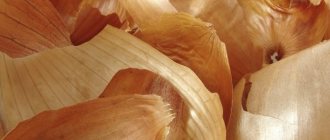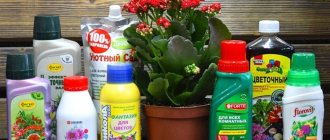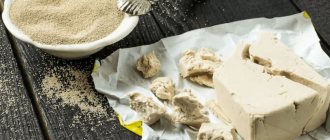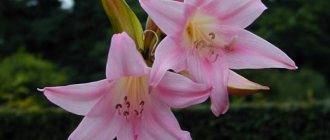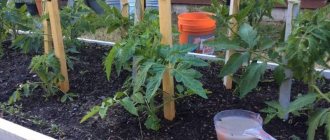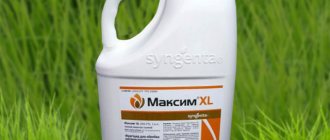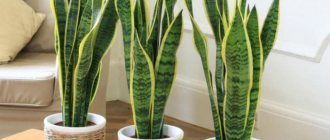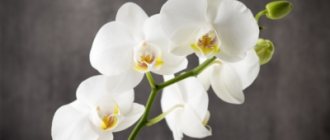Modern gardeners try to use inexpensive, but at the same time effective and environmentally friendly means in their practice to support the immunity of indoor plants and treat them from various diseases. Recently, the question has increasingly arisen: is it possible to water indoor flowers with an infusion of onion peels? Experts say that it is not only possible, but also necessary. However, it is important to know some rules and features of using this tool. In addition, it is not suitable for all plants.
What are the benefits of onion peels in the garden?
Gardeners use onion skins for several purposes. It is used to treat the soil, carry out spraying, and also add infusions to water for irrigation. In all cases, the product has a strengthening, disinfecting and stimulating effect.
Compound
Onion flakes contain many useful components. Among the main ones:
- quercetin and rutin;
- phytoncides;
- vitamin PP;
- vitamin B1;
- carotenoids;
- ascorbic acid.
The scales contain vitamins, rutin and quercetin.
The raw materials also contain useful minerals - potassium, iron and calcium.
What are the benefits of onion peels for plants and soil?
Fertilizing the garden with husks helps:
- improve soil composition;
- repel or destroy insect pests;
- strengthen plant roots and accelerate development;
- increase crop resistance to cold weather.
Important! The benefit of onion peels for the garden is to increase the amount of sugars in the fruit.
Purposes and methods of using onion peels in the garden
Natural fertilizer is used on the site:
- to saturate the soil with vitamins and microelements;
- for protection against fungal diseases and insects;
- to restore the vitality of plants damaged by frost;
- for long-term storage of vegetables.
The following methods of application exist:
- spraying plantings on leaves;
Onion infusions do not burn the leaves and are safe when sprayed - adding decoctions and infusions to water for irrigation.
When watering with onion decoctions, valuable substances quickly reach the roots
Husks are also used to mulch the soil in beds and under trees. It not only serves as fertilizer, but also prevents moisture evaporation.
Onion peels are one of the options for mulching plantings
Using onion peels to control parasites
If you find thrips or spider mites on your indoor plants, the husk will definitely help. Thrips are tiny insects, they are absolutely impossible to see, you will only see black dots. If there are a lot of insects, then silvery and brownish stripes are visible on the leaves. These thrips secrete a sticky liquid that causes a disease called sooty fungus. Spider mites are very small insects whose bodies are covered with sparse bristles. When they appear, you may notice a slightly visible cobweb on the plants.
Antimicrobial agent
Take a liter jar of onion scales. Mix with 2 liters of warm water. Let it sit for 48 hours, then strain. Add liquid soap there. Dilute with water twice, wipe the leaves of the plants, and then spray them. It is necessary that the composition gets on the underside of the leaves.
Aphids can come in a variety of colors, the most common being green and black, but white, yellow, and brown can also appear. If you see a lot of aphids near flowers, then you need to react quickly. Fill a glass of husk with a bucket of warm water (10 l), let it sit for 15 hours. Treat sprouts affected by aphids with this mixture.
To prevent the appearance of pests in the greenhouse, place a bucket in which you make an infusion of onion scales. Spray the crops with a broom from time to time.
How to prepare a nutritious decoction for your favorite flowers?
Potato tubers can be placed in an infusion of onion scales before planting. Then the bushes will grow faster. They are less damaged by pests: wireworms and even the Colorado potato beetle. But for the Colorado potato beetle, you need to soak the tubers in an infusion that lasts for many days.
How to collect onion peels for the garden
Usually, raw materials are harvested in the fall before sowing vegetables before winter. The bulbs are sorted and their scales are removed.
Peelings of yellow and red onions are suitable for fertilizer.
After collection, the husks are laid out to dry for several days in a warm place without drafts. Then the raw materials are poured into a cotton bag and put away in a cool place until spring.
Whether in the garden, in the vegetable garden...
You don’t need to think that feeding from onion peels is some kind of outdated folk remedy. Agronomists will also recommend it to you.
Onion peels for cucumbers
The scourge of cucumber plantings is all kinds of rot. To prevent this disease or treat it, it is enough to spray the green part of the plants from top to bottom once every 2-3 weeks with a solution obtained from an infusion of 400 g of husks and 2 liters of boiling water, kept for 2 days. The solution is prepared by diluting the resulting amount of infusion with water 1 to 1. Add boiled, water-swollen skins to the soil as mulch.
If the husk is added to the soil in dry form, then the concentration of substances reaching the roots after watering will be such that spraying of cucumber plantings will not be required.
For tomatoes
Tomatoes are fertilized with infusions or decoctions of the husks no more than 2 times a month. Fertilizing should be done only in the evening, and the first one should be done on the day of planting the seedlings. The difference between a feeding solution and a cucumber solution is that the infusion or decoction is diluted with water in a ratio of 1:2. And the tomatoes are not sprayed with it, but rather watered. Root feeding, about half a liter of solution is spent on each bush. The dosage is gradually increased so that by the time the fruit begins to ripen, about 2 liters of diluted working solution are pouring under the bush.
For pumpkin, potatoes, radishes
The preparation is the same as for cucumbers. The infusion is used as a vitamin, nutritious and as a preventative against rot, powdery mildew and against insects. Radishes can be watered by sprinkler irrigation. When the tops are processed and the solution drains, being absorbed into the ground.
For seedlings
Young plants, especially at the very beginning of the growing season, require a lot of high-quality nutrition to maintain strength. For seedlings, it is advisable to use not infusions or decoctions, but dry onion peels scattered in the beds and dug up with the ground. If a decoction or infusion is used, then it is not applied to the soil everywhere, but rather poured into each hole where seedlings are planted.
After planting the plants, when they have already taken root, you can also spray with a solution of the same concentration that was used for watering - this will serve as a good preventative against pests.
How to use onion peels for your garden
Basically, infusions and decoctions are made based on onion peelings. There are several recipes for preparing fertilizers.
How to prepare an infusion of onion peels for the garden
A quick infusion of onion peels for use in the garden is done like this:
- an ordinary 10 liter bucket is tightly filled with dry cleaning;
- fill to the top with water at about 70 ° C;
- cover with a lid and leave for 12 hours.
Preparing the infusion is very simple - fill a bucket with husks and fill it to the top with water
The finished infusion is filtered and immediately used to fertilize the plantings.
Infusion of onion peels for the garden using the cold method
You can fill the cleaning with cool water. The preparation process will take longer - 2 days, but the finished infusion will retain maximum benefits. It is not suitable for urgent spraying, but it can be used for routine fertilization.
You can insist on cleaning in cold water, which preserves more valuable substances
How to make an infusion of onion peels for plants in boiling water
Typically, onion peel tincture for plants is poured with hot water at 70-80 °C. But you can also use boiling water for cooking - in this case, keep the peelings in a bucket under a lid for 24 hours.
When infused in boiling water, onion peelings release maximum valuable substances
The finished product is filtered, diluted with clean water 1 to 5 and used to water the soil.
Recipes for onion peel decoctions for plants
In addition to infusions, decoctions of husks are used to fertilize the soil. There are several popular cooking recipes:
- Concentrated treatment. A large metal bucket is tightly filled with scales, compacted and filled with hot water. Then boil for 2 minutes, remove from heat and leave for 2 days. Before use, the decoction is diluted in a ratio of 1 to 5.
- Means for spraying and watering. Place 2 handfuls of peelings in 10 liters of water and boil for several minutes. After steeping for 4 hours, use it immediately, without straining or diluting.
- Fertilizer for garden and indoor flowers. A handful of dry husks is immersed in 1.5 liters of water and boiled for about 5 minutes, and then kept covered for 2 hours.
Fertilizer husks can be boiled and used almost immediately after cooling.
During processing, some of the beneficial substances in the scales are destroyed. But the remaining vitamins and minerals pass into the water in high concentrations.
As mulch
For mulching, you can use both the cake remaining after preparing infusions and fresh peelings. The raw materials are scattered over the beds or under the bushes in a layer of about 5 cm.
When mulching a garden, the husks need to be moistened so that they are not blown away by the wind.
What are the mistakes?
A decoction of onion peels is the most accessible and, most importantly, cheap fertilizer for indoor plants.
It should be used immediately after cooling, when the concentration of substances in the decoction is maximum.
Be sure to dilute with water before use! Remember that the solution should never be used in its pure form.
Make sure that when drying, midges do not infest the husks and they do not begin to rot. Therefore, before brewing, carefully examine it, take only healthy skin. It should be stored in cloth bags that allow air to pass through well.
The examples given are not a panacea for all diseases of indoor plants. But they work! Try it - you have nothing to lose! And we promise you that the plants will thank you with lush flowering and magnificent appearance!
Rules for using onion peels in the garden
You can use onion peelings to fertilize almost any plant. But when caring for specific crops, you need to know their requirements.
Onion peels for feeding seedlings
Vegetable crops need fertilizers already in the first stages of growth. For young seedlings in a greenhouse or in boxes on a windowsill, prepare the following infusion:
- a handful of husks is placed tightly in a jar;
- pour boiling water in a liter volume;
- leave to infuse for a day.
For seedlings, onion peels are brewed in just a liter of water.
Onion peels for seedlings are diluted in a ratio of 1 to 3 with warm, clean water and used for watering at the root.
For vegetable crops
Fertilizing with onion peels is beneficial for actively growing crops at any stage. Healthy plantings can be sprayed only 2-3 times per season; weakened plants can be treated weekly.
For tomatoes and cucumbers
It is recommended to water and spray cucumbers in the greenhouse and in the soil every week to protect against fungi. You can use any infusion on the husk.
Tomatoes are watered with onion fertilizer against fungi throughout the entire cultivation - from seedlings to harvesting. You can use a standard infusion, the consumption per bush is 1 liter, and the root method of feeding is preferable for tomatoes.
Tomatoes can be watered with infusions of onion scales throughout the season.
Adding onion peels when planting potatoes
Onion peelings help protect potatoes from a dangerous pest - wireworm. They are usually used like this: a large handful of husks are placed into the prepared holes at the planting stage.
Onion peelings are placed in the holes even before potatoes are planted - this repels pests
Advice! Potato tubers can be sprayed with onion fertilizer before planting, this will increase resistance to fungal diseases.
For pumpkin
To fertilize pumpkin, use a concentrated decoction of the husk, diluted with clean water. They do it like this:
- a glass of purification is filled with water, you need to take 2 liters;
- boil and immediately turn off;
- leave covered for 12 hours.
A strong onion infusion can be used to treat pumpkin to protect against diseases and increase yield.
Fresh fertilizer is diluted with a bucket of clean water and the bed is treated before planting the pumpkin. Throughout the season, the vegetable crop is watered or sprayed with the same infusion once every 2 weeks.
For radishes
You can use onion peels in the garden to increase the juiciness of radishes. For processing, take the following infusion:
- pour 8 liters of boiling water into a liter jar of dry raw materials in a bucket;
- cover with a lid and leave for a day;
- The finished product is diluted with water 1 to 5.
Onion peels help prevent radish cracking and disease
The resulting infusion is used to treat radishes immediately after planting, and then spray the crop twice a month during growth.
For fruit and berry crops
The husks can be used to process strawberries, garden strawberries, gooseberries, currants and other crops. Fertilizer improves yields and makes berries sweeter, and also helps get rid of pests.
Not only strawberries, but also any fruit crops can be treated with onion infusions
The treatment agent is taken as a standard one, a bucket is filled with scales and filled with hot water, after which it is left for 12 hours. For the purpose of fertilization and prevention, fruit and berry crops are sprayed before and after flowering; to combat insects, weekly watering at the root is used.
For garden flowers
The benefits of onion peels for plants also extend to garden flowers. The fertilizer is used in the same way as for fruit and berry crops, prepared in accordance with the selected recipe and diluted with clean water to reduce the concentration. Preventive spraying is carried out when buds are pouring and during flowering.
Onion peel and its infusions are an effective remedy for improving flowering
To protect against fungi, you can water garden flowers with onion infusion at the root. When infested by pests, spraying is usually used.
The use of onion scales for plant diseases
If you see that zucchini, zucchini, and cucumber seedlings have yellowed leaves. Then take 4 handfuls of onion peels, add a bucket of water (10 l), and boil. Let him insist. Then dilute 2 liters of the prepared mixture with a bucket of warm water and pour over the cucumber seedlings. Also use the mixture on yellowed sprouts of the pumpkin family. In addition, you can use this composition to feed tomato sprouts.
Source of healing quercetin
With improper care: excessive soil moisture, watering with cold water, poor ventilation, too much nitrogen fertilizer, and even sudden temperature changes, you can see how the base of the stem of indoor flowers and garden plants darkens, and then they fall. This means that a fungus has grown on the sprouts. This disease is called "black leg". Onion scales also help in this situation. Fill the husk with water and let it settle. Treat diseased plants 3 times, maintaining an interval of 6 days between treatments.
How to use onion peels for indoor plants and flowers
Houseplants often suffer from a lack of useful elements in cramped pots. Fertilizing with natural solutions supplies them with vitamins and minerals through leaves and roots, strengthens the immunity of crops.
Is it possible to water flowers with onion peels?
Infusions and decoctions of onion scales are suitable for fertilizing indoor plants at the root. If you follow the correct dosage, it will not cause harm.
Watering flowers with a decoction of onion peels
The decoction has a high concentration of useful substances, and is usually used if a houseplant begins to turn yellow and wither. The product is prepared as follows: boil 1 cup of peelings in a saucepan of water for 5 minutes, then cool and apply root fertilizer.
Indoor plants can be watered with onion decoction if there is a severe lack of minerals
If there is a lack of nutrients in the soil or with fungi, the product helps quickly. The result becomes noticeable after the first application; fertilize the plants with onion peels once a week.
Watering flowers with infusion of onion peels
For the purpose of routine preventive fertilizing, a fertilizer with a low concentration is used. To prepare it, just remove the dry scales from a pair of large golden onions and pour a liter of boiling water over it, and then leave for 3 days.
The prepared product is poured onto the soil in the pots. Usually after 2 weeks the plants begin to actively grow.
What are the benefits of watering onion skins for violets?
Beautiful violets react sensitively to lack of nutrients. If the flower has stopped growing, turns yellow and does not bloom, you can treat it with onion infusion. Fertilizer will deliver vitamins to plant tissues, increase immunity and improve flowering.
It is recommended to fertilize violets with onion peels once every 2 months.
A glass of dry cleaning must be filled with 2 liters of water and boiled for half an hour over low heat, and then left for 6 hours under the lid. Watering is carried out with the finished product; it is important to carry it out in the morning or in the evening, at a stable temperature in the room and not earlier than a month after transferring it to a new pot. Water should not get on the velvety leaves - this is harmful for the violet.
Attention! It is recommended to apply fertilizers for violets every 2 months; the flowering plant very quickly depletes the soil in the pot. Autumn treatments are especially useful, as they help the plant store nutrients.
What plants should not be watered with onion peels?
Despite the fact that onion peel contains a large number of microelements necessary for plants, and is also a natural fungicide and insecticide, it cannot be used for all indoor flowers.
The following plants should not be watered with a decoction of the husk:
- cacti;
- ficus;
- succulents;
- aloe (agave);
- Crassula.
Fertilizing these flowers with onion peels not only does not give a positive result, but also harms their growth and full development.
Treatment with onion peels against pests and diseases
An important area of application of onion peels for the vegetable garden is the fight against fungal diseases and pests. For treatments, use 2 liters of a concentrated decoction aged five days, topped up with a bucket of fresh water.
Onion peel for aphids
The active substances in onion infusion help cope with even large colonies of aphids. Infected plantings are generously sprayed with a spray bottle on a cloudy day, not forgetting to treat the underside of the leaf blades.
Spraying onion scales with infusions helps get rid of aphids
Treatments can be repeated every week. But usually it is possible to eliminate aphids after three uses of fertilizer.
Onion peel from wireworm
The pest feeds on the underground parts of garden crops and causes particular harm to potatoes. To combat wireworms, dry onion peelings are planted directly into the beds when planting tubers.
To prevent wireworms, onion peelings are usually embedded in the soil in the spring.
If the pest does appear, the soil can be shed once a week with a concentrated decoction. But usually adding husks to the holes reliably protects the culture.
Against blackleg and bacteriosis
Fungal diseases most often affect seedlings and adult plants during waterlogging and sudden temperature changes. To prevent the development of diseases or cope with symptoms, plantings are sprayed with any of the fertilizers on onion peelings once a week in the spring and during rainy summer conditions.
In humid weather, you can spray the garden with an infusion of onion peels to prevent blackleg.
Onion remedies for bacteriosis and blackleg are rarely applied under the root. Usually, with these ailments, the soil is already very swampy.
Against bacterial cancer
The disease leads to the appearance of tumors and wounds on the rhizomes and above-ground parts of plants.
Decoctions of onion scales help prevent bacterial cancer on poor soils
The best way to fight cancer is preventively. If the soil on the site is poor and the plantings often get sick, they should be sprayed with onion fertilizers at intervals of 14 days from the end of flowering to fruiting.
Against downy mildew
The disease, which leaves a whitish coating on the tops, especially often affects cucumbers and tomatoes in August. To prevent the disease, plantings are sprayed weekly with onion infusion. If the disease has already appeared, then you can use a concentrated decoction.
Fertilizers based on onion scales protect plantings from downy mildew
Against spider mites and thrips
Phytoncides contained in onion peels help get rid of thrips on vegetable crops and spider mites. Spraying is carried out from the beginning to the end of summer every week; you can use any infusion or decoction. When processing, it is important to ensure that the product gets on, among other things, the underside of the leaves, where pests usually hide.
An infusion of onion scales helps get rid of spider mites
Advice! For greater effectiveness, you can add a little soap shavings to the solution.
Onion peels as fertilizer and disease prevention
If indoor flowers are rapidly losing their decorative qualities, then you should immediately water them with an infusion of onion peels.
How to prepare an infusion?
- A handful of husks must be poured with 1.5 liters of boiling water, placed on the stove and boiled for 5 minutes.
- After this, you need to remove the broth from the stove and leave for a couple of hours.
- Strain the finished product and cool.
Flower growers recommend spraying plant leaves and the top layer of soil with this decoction once a month. This procedure not only has an antiseptic effect, but also saturates the soil with essential microelements.
It should be remembered that this infusion is not suitable for storage; it should be prepared each time before use.
The benefits and harms of this supplement
First, let's talk about the benefits of such fertilizer.
Firstly, it is a source of useful microelements for plant nutrition.
Secondly, onion broth can be used to prevent the appearance of pests and diseases.
In general, this feeding is practically harmless, but you should not use it on an ongoing basis, since peppers and tomatoes, for example, begin to taste bitter.
Another small drawback of the drug is that it must be used on the same day that the working solution was diluted. Then it begins to rapidly lose its beneficial properties.
Infusion of onion peels for pepper seedlings
For peppers you can use the same proportions as for tomatoes. You can prepare this solution:
- 2 cups of husks are poured into a container;
- Next, pour out 2 liters of water;
- Place the pan on high heat.
- The mixture is brought to a boil;
- As soon as the water boils, turn down the heat and let the composition boil for a quarter of an hour;
- Next, the broth is infused for the next 24 hours, stirring occasionally.
- The concentrate is diluted 1 to 10 with water and then used to treat pepper seedlings.
ON A NOTE. If you do not have too many young seedlings, then you can reduce the amount of husk with water several times so as not to throw out the unused infusion.
Fertilizer for house flowers
Caring for plants at home requires even more time and money than growing in the garden. After all, the conditions at home for flowering or decorative deciduous species are not ideal.
It is too dry from the radiators, there is often not enough light - if the windows face north or east. Or there is too much light - if the windows face south. But most exotic plants come from humid jungles, so the conditions for keeping them must be brought closer to natural ones.
Oddly enough, onion peels will help create such conditions. The jungle soil, strewn with dead leaves, branches and fruits, is similar in composition to that which is formed after adding onion peels to it! The same flavonoids, substances formed during decomposition and fermentation, the same tanning properties of mulch.
When feeding indoor crops, you cannot use onion decoctions or infusions for succulents, ficuses and fat plants: instead of developing, they may die. The extracts released from onion peels are completely uncharacteristic of the sands or rocky wastelands of deserts, semi-deserts and dry savannas where these plants live!
To prepare an infusion for the purpose of feeding indoor plants, a multi-layered husk from two large onions of a dark, golden brown color is sufficient. If the color of the husk is light, it is taken from 3-4 onions.
The husk is poured with a liter of boiling water, left for 3-4 days, and plants with signs of wilting or those that have stopped growing are watered first. Usually after 2-3 weeks the plants come to life, begin to grow, and new shoots or buds appear on them.
This infusion is used as a top dressing no more than once every 3-4 weeks - the concentration of nutrients in it is such that the soil can be “overfed”, and the roots of the plants will get burned.
